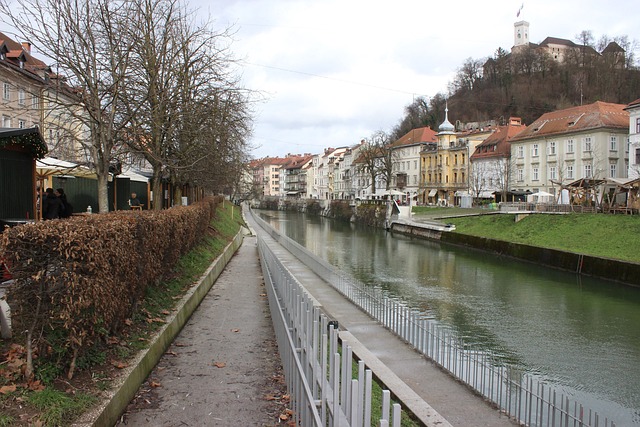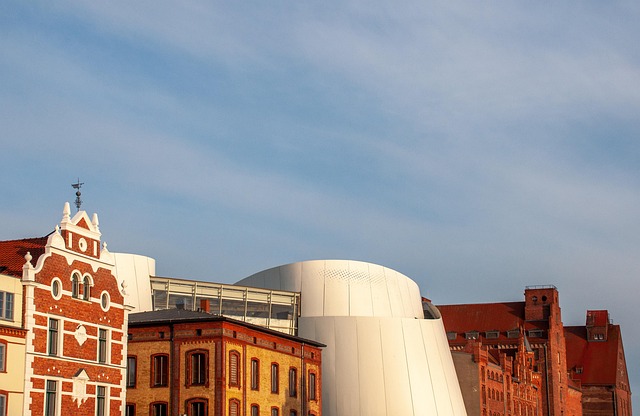Karachi's Civil Lines, established in the late 18th century under British rule, is a historical testament to the city's rich past. Originally designed as a segregated zone for officials, it now preserves colonial-era architecture and culture. Today, exploring these remnants offers a unique view of Pakistan's colonial history, while highlighting the area's potential for revitalization through modern infrastructure, cultural events, and tourism, cementing Karachi's position as an economic game-changer.
“Explore the multifaceted history and modern relevance of Banks Civil Lines, an iconic urban area within Karachi. Once a strategic planning initiative, this sector has evolved into a vibrant community, reflecting the city’s diverse cultural tapestry. This article delves into the historical background, highlighting its transformation over time, and examines its role in shaping Karachi’s contemporary landscape. Additionally, we discuss the challenges it faces today while exploring promising future prospects for this cherished part of the metropolis.”
- Historical Background of Banks Civil Lines in Karachi
- Modern Significance and Role in Karachi's Urban Landscape
- Challenges and Future Prospects for This Iconic Area of Karachi
Historical Background of Banks Civil Lines in Karachi

Karachi, Pakistan’s bustling metropolis, boasts a rich historical backdrop when it comes to its civil lines. Originally established as a planned city in the late 18th century, Karachi’s layout reflected the British colonial influence that left an indelible mark on the region. The Civil Lines area, specifically, was designed as a segregated zone for government officials and military personnel, showcasing the architectural and administrative prowess of the era. These lines served as a strategic buffer between the urban center and the coastal areas, facilitating trade and defense.
Over time, Karachi’s Civil Lines evolved into a vibrant community, mirroring the diverse culture and heritage of the city. The area witnessed the rise of grand colonial buildings, spacious parks, and well-maintained roads, all while embracing the dynamism that defines modern-day Karachi. Today, exploring the historical remnants within these lines offers a glimpse into Pakistan’s colonial past, making it an essential part of the city’s tapestry for both locals and visitors alike.
Modern Significance and Role in Karachi's Urban Landscape

In the urban heart of Karachi, Civil Lines stands as a testament to the city’s rich history and evolving landscape. Today, this area holds immense modern significance, reflecting Karachi’s dynamic nature as Pakistan’s financial hub. The banks along these lines have not only facilitated trade and commerce but also shaped the city’s architectural tapestry with their impressive structures. These institutions play a vital role in Karachi’s economic growth by fostering business activities, providing financial services, and enabling access to capital for local entrepreneurs.
The bustling streets of Civil Lines are a hub of economic activity, mirroring the vibrant energy of the metropolis. Banks here serve as landmarks not just for financial transactions but also as community spaces, hosting events that foster connections within the diverse Karachiite population. In terms of urban planning, these institutions contribute to the city’s overall development by adhering to modern standards and embracing innovative solutions, ensuring Karachi remains a game-changer in Pakistan’s economic landscape.
Challenges and Future Prospects for This Iconic Area of Karachi

Karachi’s Civil Lines, an iconic area steeped in history, faces unique challenges that require thoughtful strategies for its future development. The region, known for its architectural heritage and cultural significance, struggles with issues like inadequate infrastructure, outdated services, and a lack of economic opportunities compared to other parts of the bustling metropolis. Despite these hurdles, Civil Lines holds immense potential as a vibrant hub that can once again reflect the diverse tapestry of Karachi’s past and present.
Looking ahead, revitalizing Civil Lines requires a multi-faceted approach. This includes upgrading infrastructure to cater to modern needs, encouraging cultural events and artistic initiatives to breathe life into historic spaces, and fostering economic growth by promoting local businesses and tourism. With careful planning and community involvement, this iconic area can transform into a thriving center that celebrates Karachi’s rich heritage while embracing its future.
The historic Banks Civil Lines in Karachi, a testament to the city’s rich past, continues to play a vital role in its modern urban landscape. This iconic area, with its architectural marvels and cultural heritage, has evolved while preserving its significance. However, challenges such as urbanization pressures and preservation concerns demand thoughtful strategies for the future. By navigating these obstacles, Karachi can ensure that Banks Civil Lines thrives as a vibrant center, offering insights into its past and shaping an inclusive, sustainable future for the metropolis.
